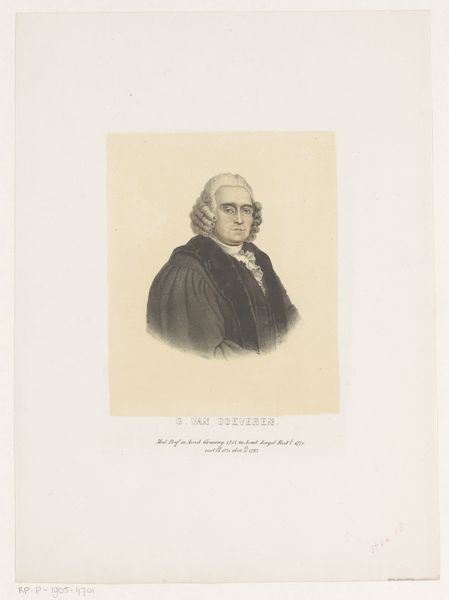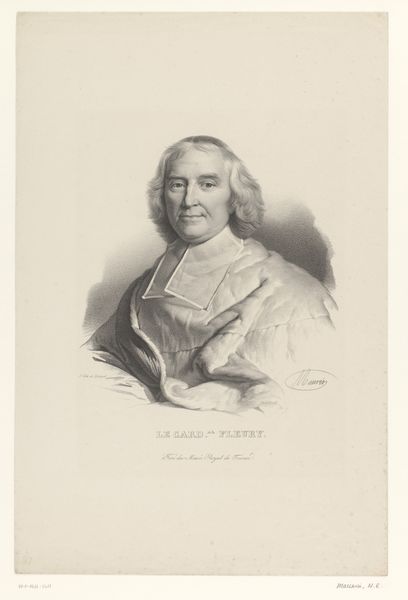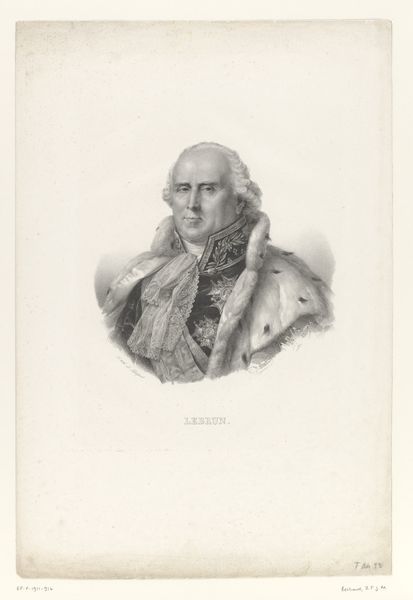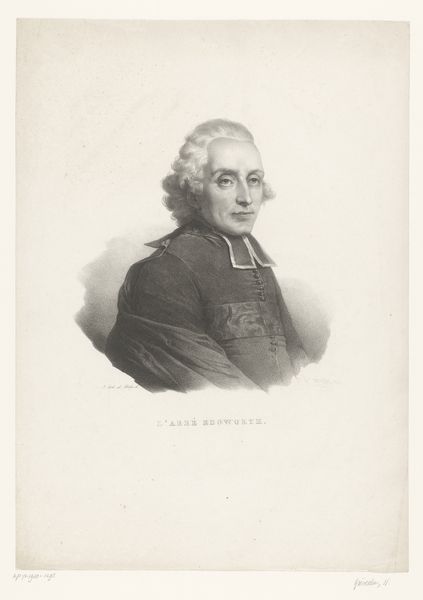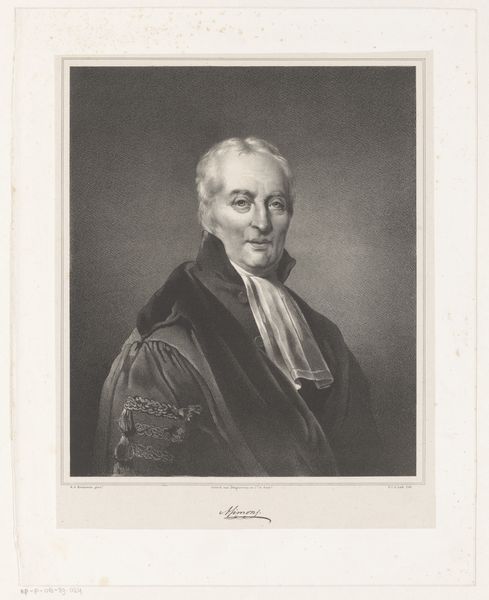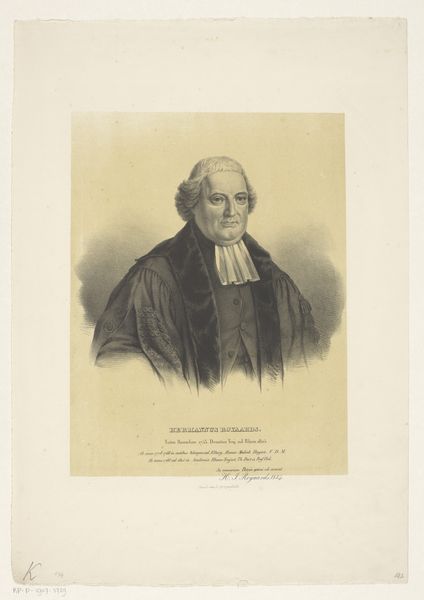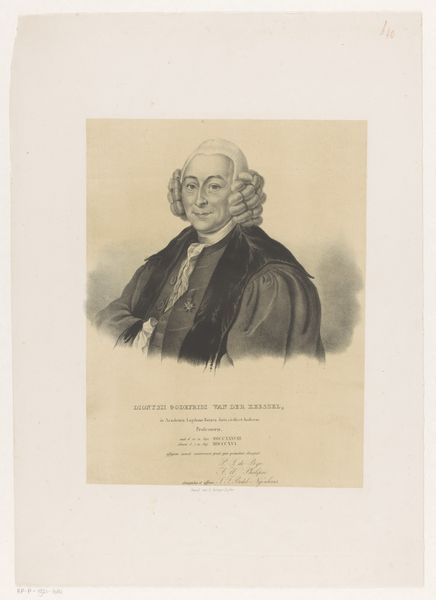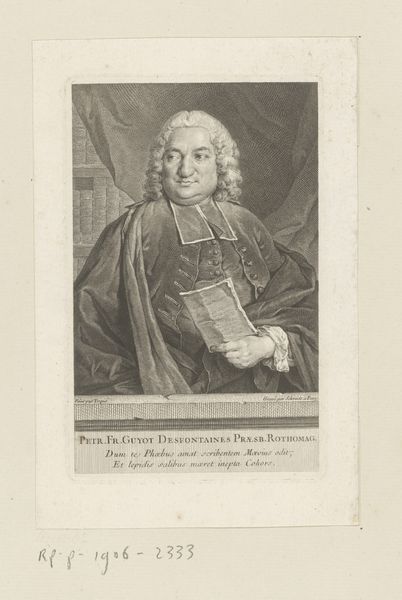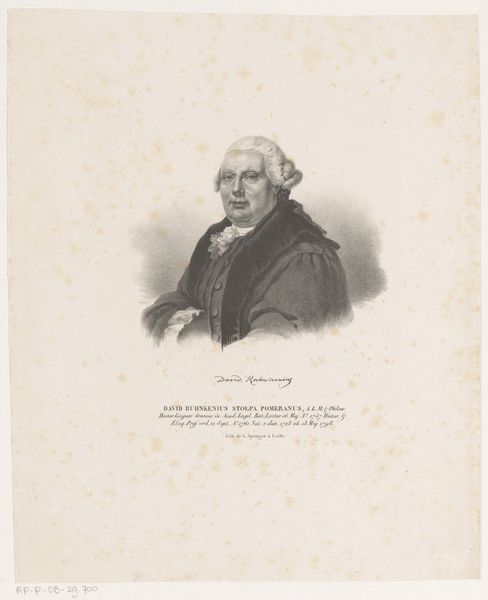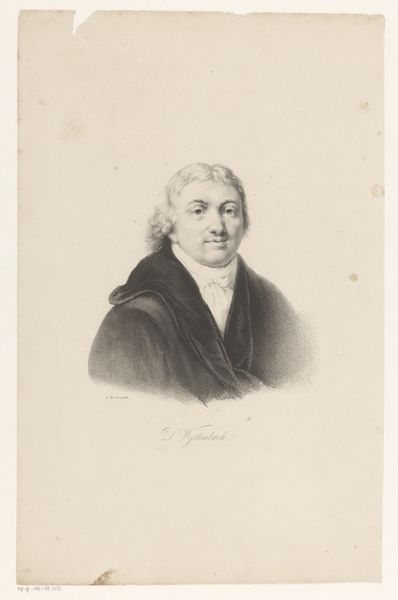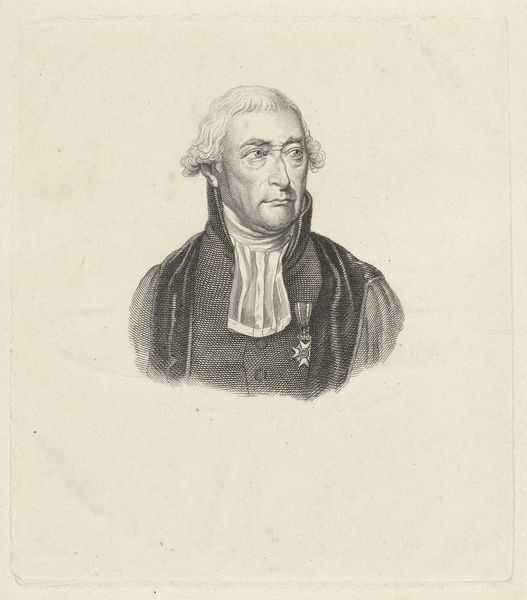
#
pencil drawn
#
light pencil work
#
photo restoration
#
pencil sketch
#
portrait reference
#
pencil drawing
#
animal drawing portrait
#
portrait drawing
#
pencil work
#
tonal art
Dimensions: height 484 mm, width 340 mm
Copyright: Rijks Museum: Open Domain
Curator: Let’s consider this finely rendered portrait—identified as "Portret van Gualtherus van Doeveren," and dated somewhere between 1809 and 1871, of which the author is unfortunately anonymous. The medium appears to be a precise application of graphite. What captures your eye here? Editor: Immediately, there's a powerful stillness—an almost clinical detachment—despite the ornate costume. This work embodies for me a reflection of power dynamics, from its history of medicine to ideas about class and appearance, making it intriguing to unravel what societal structure existed in those times. Curator: Indeed. I think the portrait’s strength lies in the nuanced detailing, such as how the texture is used to distinguish between skin and textile. Considering van Doeveren's medical profession, the artist highlights both the intellect and the authority invested in him during a period of profound societal and scientific transition. Note the way the light reflects off the meticulously rendered wig, suggesting societal prominence. Editor: Right. Beyond status, it feels important to examine the implications of representing knowledge, specifically medical knowledge, in a visual form accessible only to certain groups. What cultural expectations were upheld or subverted through this very act of portrayal? We must recognize how that image then affects present assumptions about expertise. Curator: That makes me also wonder if we can link his features back to broader trends of representation of power through similar visual signifiers during the 19th century: wigs, elaborate garments, posture. They solidify archetypes—shaping future interpretations of leadership. Editor: I can see that too. By perpetuating specific codes of representation, the piece reveals how dominant ideologies were subtly yet firmly entrenched within the public consciousness, solidifying what Pierre Bourdieu describes as "symbolic capital" afforded to those belonging to that upper class. The subject here literally embodies cultural ideals and prejudices. Curator: Yes, it asks viewers to reflect not only on the past’s legacy but how those visuals shape our interpretation of present and future models. Editor: Precisely! It encourages a crucial critical perspective. I came in with the image's impression of calmness but am leaving reminded of its undercurrent of sociopolitical weight.
Comments
No comments
Be the first to comment and join the conversation on the ultimate creative platform.
